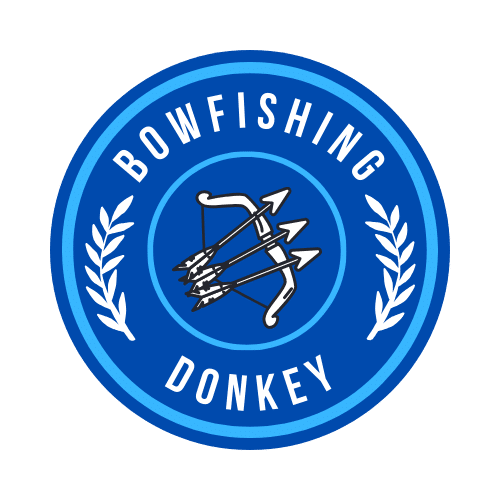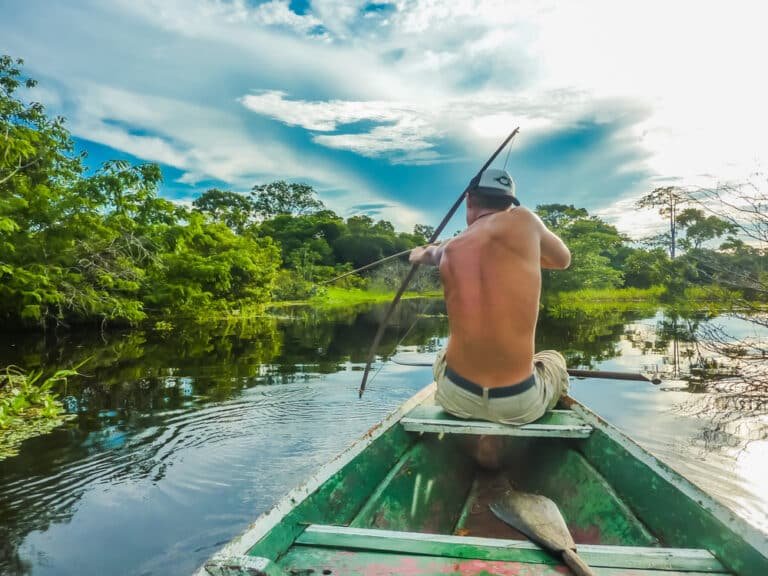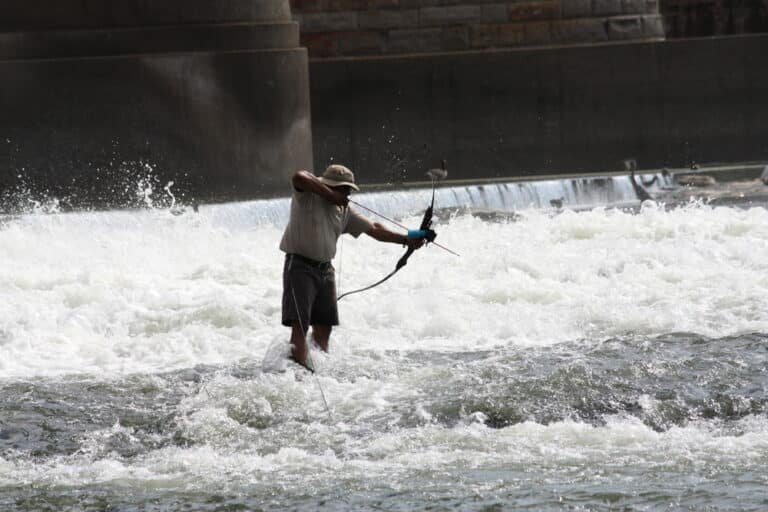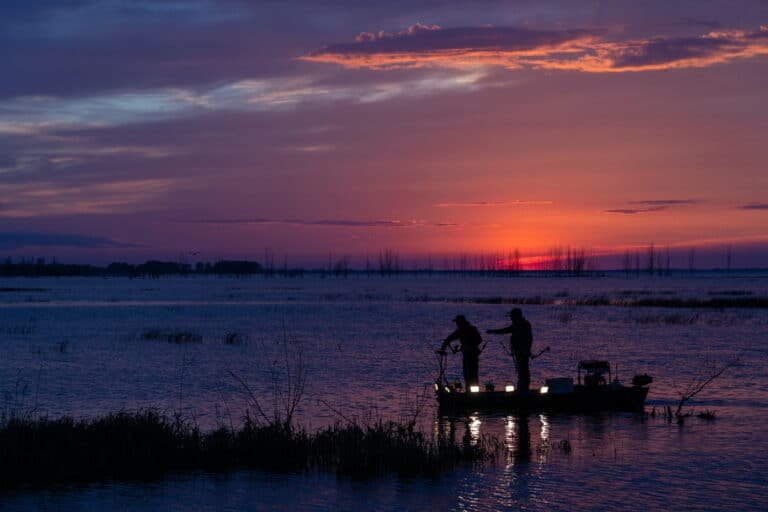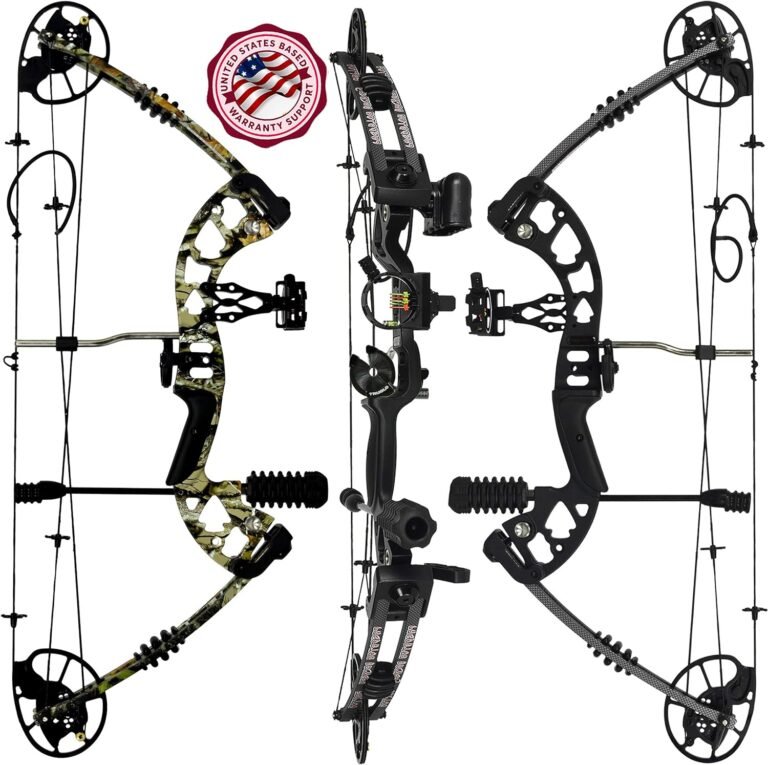Bowfishing Safety: 8 Tips for a Powerful Experience
Bowfishing safety is a critical component of bowfishing. Bowfishing has evolved into a popular recreational activity that allows enthusiasts to test their aim while reeling in some delicious freshwater or saltwater species.
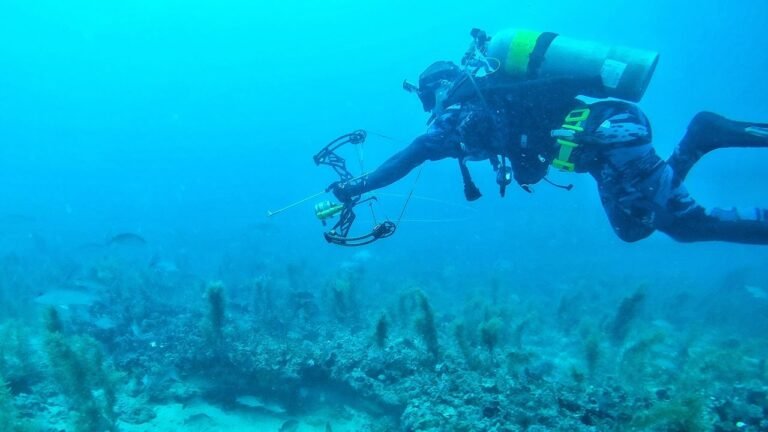
Now, let’s get serious and talk about the importance of safety in bowfishing. As much as we adore the excitement and thrill of this sport, we must never forget that safety should always be our top priority.
We’re dealing with powerful bows here, folks – these babies pack quite a punch! Throwing arrows into murky waters can pose significant risks if proper precautions aren’t taken.
Bowfishing Safety Tips
- Always wear a life jacket. This is the most important safety tip for any boater, including bowfishers. A life jacket can save your life if you fall overboard or your boat capsizes.
- Use a bowfishing safety slide. A bowfishing safety slide is a device that attaches to your bowfishing arrow and helps to prevent the arrow from snapping back toward you if you miss your target.
Be aware of your surroundings. Before you shoot an arrow, know what is behind your target. You don’t want to shoot someone or something you didn’t mean to accidentally.
Never shoot at the water’s surface. A broadhead arrow can ricochet off the water and cause serious injury.
Don’t shoot while standing in the water. If you must wade in the water, wear chest waders and make sure your footing is secure before shooting.
Use a retrieval system. A retrieval system will help you retrieve your arrows from the water, preventing lost arrows from becoming hazards to other boaters and wildlife.
Be careful with your arrows. Broadhead arrows are very sharp and can cause serious injury. Be careful when handling them, and always keep them pointed in a safe direction.
Take a bowfishing safety course. A bowfishing safety course can teach you the important safety skills and knowledge you need to stay safe while bowfishing. Many states require a bowfishing safety course to obtain a bowfishing license.
Personal Protective Equipment (PPE): Ensure you have the right gloves and eye protection for your venture.
Always wear a life jacket
This is the most crucial safety tip for boaters, especially bowfishers. Life jackets come in various types, so here’s what to consider for bowfishing:
- Type of life jacket: Choose a Type III life jacket. These are designed for buoyancy in calm, inland waters and offer good mobility for activities like bowfishing. They are comfortable to wear for extended periods and won’t restrict your movement while shooting.
- Fit: A properly fitting life jacket is essential. It should be snug but not constricting, allowing for easy breathing and arm movement. Most life jackets have adjustable straps to achieve a good fit.
- Wearing it right: Always wear your life jacket while on the water, not just when conditions seem risky. It takes seconds to fall overboard, and having the life jacket on already can save your life.
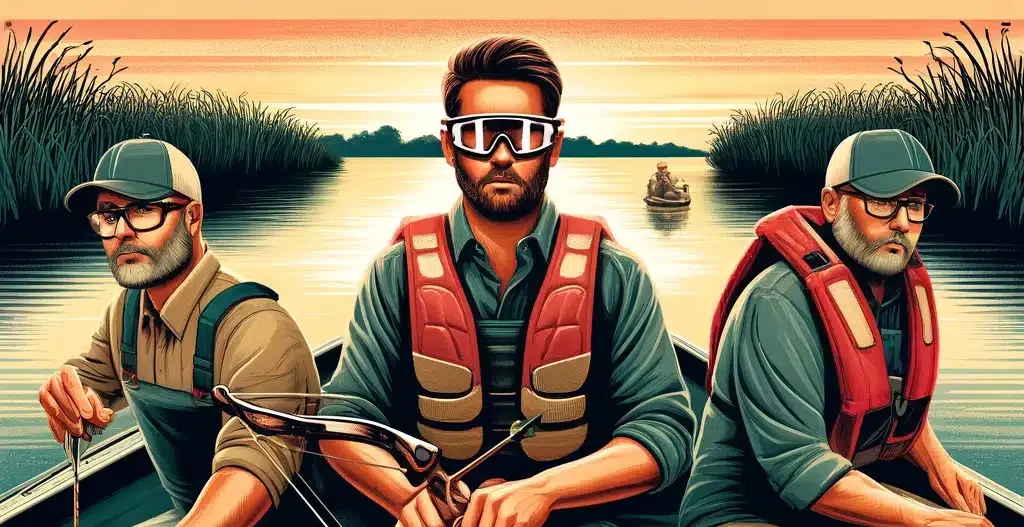
Use a bowfishing safety slide
A bowfishing safety slide is a small, lightweight device that attaches to your bowfishing arrow and is critical in preventing injuries. Safety slides are typically made from lightweight, durable materials like plastic or metal to minimize impact on arrow flight.
Function: The slide performs two key functions during a shot. First, it keeps the bowfishing line routed in front of the arrow rest and away from the bowstring. This prevents the line from tangling with the bowstring on release, which can cause a dangerous situation called arrow snapback. Second, after the arrow is released, the slide travels down the shaft and stops at a designated point near the broadhead. This ensures the line doesn’t interfere with the arrow’s flight.
Types of slides: There are various safety slide designs, but most consist of a small cylinder that slides along the arrow shaft. Some slides have a nock attached at the front to connect to the bowstring, while others are designed to slide over your existing nock.
Material and weight: Safety slides are typically made from lightweight, durable materials like plastic or metal to minimize impact on arrow flight.
Ease of use: Safety slides are easy to install and use. Generally, they slide onto the arrow shaft and lock in place with a screw mechanism or friction fit. The line is then attached to the slide itself or a designated point on the slide.
Be aware of your surroundings

This is critical in bowfishing safety for a few reasons:
Safety of others: Bowfishing arrows travel far and fast. Always be sure of what’s behind your target before shooting. This could be other boats, swimmers, people wading in the shallows, or even bystanders on the shore. A stray arrow could cause serious injury or even death.
Avoiding property damage: Make sure your target isn’t near docks, boats, or other property that could be damaged by a missed shot. A ricocheting arrow could put a hole in a boat or damage other equipment.
Respecting wildlife: It’s important to only shoot at fish you intend to harvest. Discharging arrows into the water at random can injure fish that are unsuitable for eating or disrupt the natural ecosystem.
Here are some additional tips for maintaining situational awareness while bowfishing:
- Communicate with your crew: If you’re bowfishing with others, let them know where you aim before you shoot. This helps everyone stay aware of their surroundings and avoid accidents.
- Use a spotter: A spotter can be especially helpful in murky water or dense vegetation. They can help you identify targets and ensure a clear shot path.
- Maintain a clear field of view: Avoid shooting through tall grass, reeds, or other obstructions that could block your view of the target and what’s beyond it.
Never shoot at the water’s surface

This might seem like a good shot at a fish, but it can be dangerous for a few reasons:
Ricochets: Broadhead arrows are designed to penetrate deeply. If you hit the water’s surface, the arrow can ricochet off the water at an unpredictable angle. This can cause serious injury to yourself, someone in your boat, or even someone onshore.
Glancing blows: Even if the arrow doesn’t ricochet completely, it can glance off the water at a shallow angle. This glancing blow can reduce the arrow’s penetration power and potentially injure the fish without killing it clean. A wounded fish can suffer and escape, leading to wasted meat.
Loss of arrows: A glancing blow can also cause the arrow to skip across the water’s surface and potentially get lost. Lost arrows not only cost money to replace, but they can also become hazards to other boaters and wildlife if they become entangled.
Here are some safer alternatives to shooting at the surface:
Wait for a deeper shot: If a fish breaks the surface, be patient and wait for it to dive deeper before taking a shot. This ensures the arrow will penetrate properly and reduces the risk of ricochets.
Lead the target: When aiming at a fish swimming just below the surface, aim slightly ahead of it. This considers the arrow’s trajectory and ensures it hits the fish in a deeper part of the body for a clean kill.
Don’t shoot while standing in the water
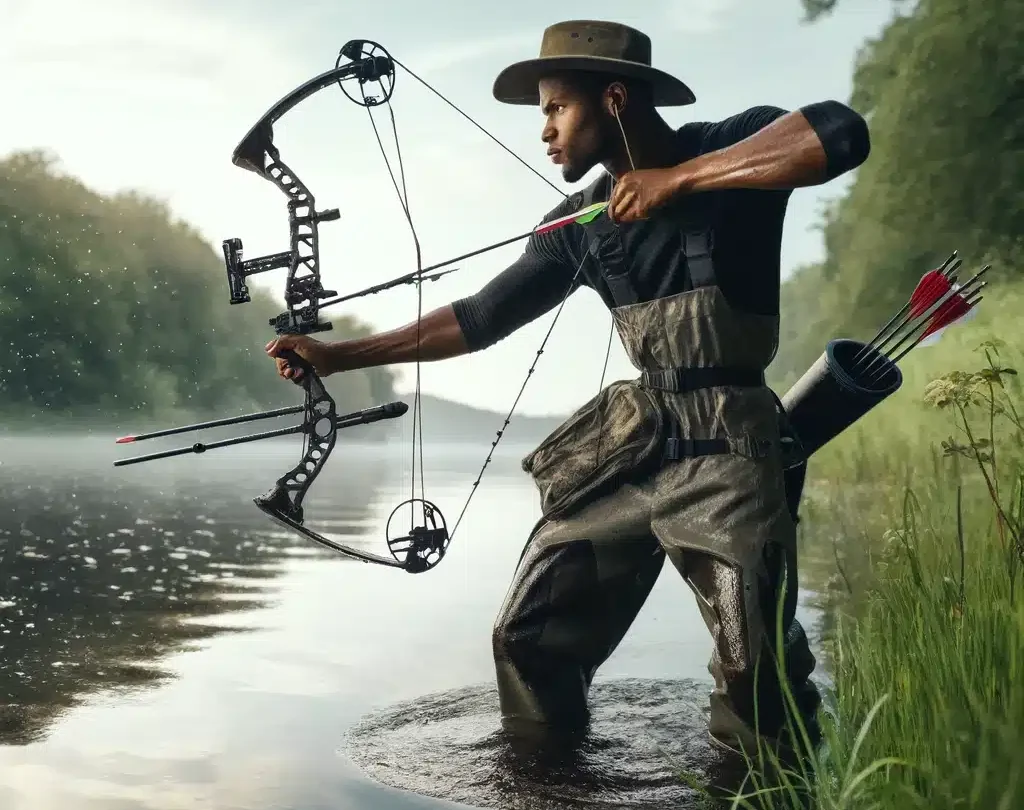
While the allure of wading in shallows to get closer to fish might be tempting, it’s important to avoid shooting from the water for safety reasons:
Unstable footing: Shooting a bow requires a stable platform. Standing in the water, especially uneven or muddy, can make maintaining proper balance and form difficult. This can lead to inaccurate shots and increase the risk of accidents.
Entanglement hazards: If you lose footing or fall while shooting in the water, you risk getting tangled in your bowfishing line. This can be dangerous, especially if the current is strong or obstacles are nearby.
Restricted movement: Wading in water can restrict your movement and make it difficult to maneuver quickly or safely. This can be problematic if you react suddenly to avoid a hazard or retrieve a fish.
Here are some safer alternatives to shooting from the water:
Use a boat: A stable boat provides a safe and secure platform for shooting. You can position yourself for optimal shots and have better maneuverability.
Use a kayak or canoe: If a boat isn’t available, a kayak or canoe can be a good alternative. Choose a stable model and remain seated while shooting.
Shoot from shore: If you’re bowfishing in shallow enough water, you can shoot from a secure position on the shore. This allows for good footing and easy maneuvering.
Use a retrieval system
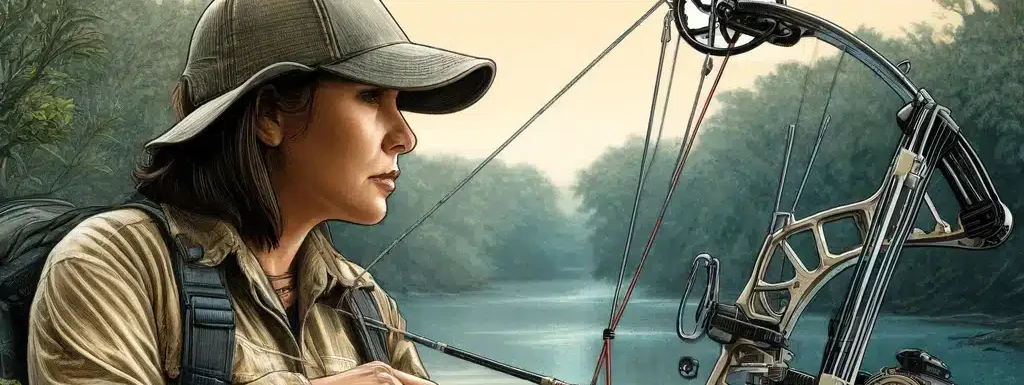
A retrieval system is a valuable tool in bowfishing for several reasons:
Retrieving arrows: Lost arrows not only represent a financial loss, but they can also pose a danger to other boaters and wildlife if they become entangled. A retrieval system allows you to easily recover arrows from the water, reducing waste and potential hazards.
Reduced snags: Even with careful shot placement, arrows can snag on underwater obstacles like branches, rocks, or vegetation. A retrieval system helps you pull the arrow free without having to dive into the water or risk damaging your equipment.
Faster retrieval: Retrieving arrows by hand can be time-consuming and frustrating, especially in murky water. A retrieval system allows you to quickly and easily recover your arrows, keeping the pace of your fishing and maximizing your time spent shooting.
There are two main types of retrieval systems used in bowfishing:
Mechanical reels: These are mounted on the bow and connect to the bowfishing line. After shooting, you can use the reel to pull the arrow back towards the boat. Mechanical reels come in various sizes and capacities to handle different water depths and fish sizes.
Floating retrieval lines: These lines are attached to the arrow’s nock and float on the water’s surface. After shooting, you can follow the floating line to retrieve your arrow. Floating retrieval lines are simple and inexpensive, but they can be less effective in windy conditions or areas with strong currents.
By incorporating a retrieval system into your bowfishing setup, you can experience several benefits, including saving money on lost arrows, minimizing risks to wildlife and other boaters, and maximizing your fishing efficiency.
Be careful with your arrows
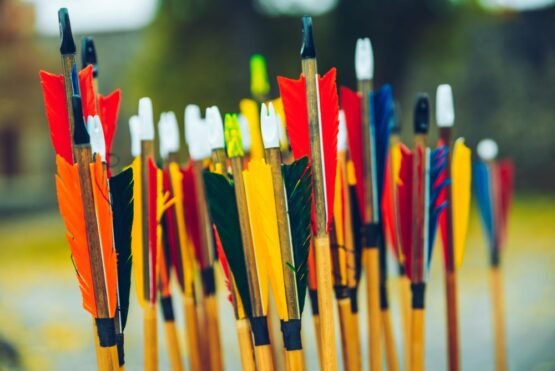
Broadhead arrows used in bowfishing are no joke! Here’s why caution is crucial when handling them:
Sharpness: Broadheads are designed to inflict serious wounds. The blades are incredibly sharp and can easily cut skin or muscle if mishandled. Always treat these arrows respectfully and avoid touching the broadhead without proper hand protection.
Accidental discharge: Bowfishing bows are powerful and can forcefully fire arrows. Even a minor bump or jostle can cause an accidental discharge if the bow isn’t properly secured. Keep your finger off the trigger until you’re ready to shoot, and ensure the safety is engaged when not used.
Storage and transportation: Store your arrows in a safe and secure container when not in use. This protects them from damage and prevents accidental injuries. Keep your arrows pointed in a safe direction, away from yourself and others when transporting them.
Here are some additional tips for safe arrow handling:
Use a quiver: A quiver keeps your arrows organized and readily accessible while minimizing the risk of entanglement or accidental discharge.
Nock and un-nock carefully: When attaching or removing the arrow from the bowstring, be mindful of the broadhead and avoid pointing it towards yourself or others.
Maintain your equipment: Regularly inspect your arrows for any damage to the shaft or broadhead. Dull or damaged broadheads can be less effective and potentially more dangerous if they break on impact.
Following these safety precautions can minimize the risk of injury while handling your bowfishing arrows. Remember, a little caution goes a long way in ensuring a safe and enjoyable bowfishing experience.
Take a bowfishing safety course
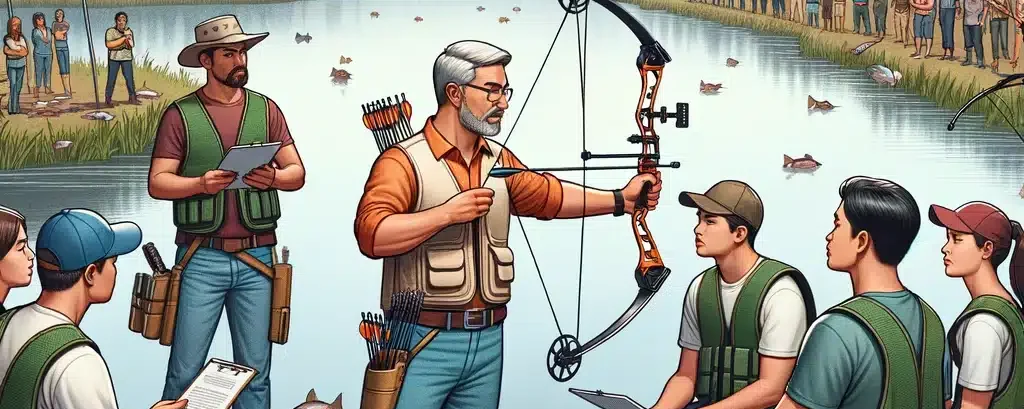
A bowfishing safety course is an excellent investment for anyone interested in this activity. Here’s why a course can benefit you:
Learn essential skills: Qualified instructors can teach you the proper techniques for handling your bowfishing equipment, including safe shot placement, arrow retrieval, and boat operation in a bowfishing context.
Understand regulations: Bowfishing regulations can vary depending on your location. A safety course can help you understand the specific regulations in your area, including licensing requirements, legal shooting hours, and restrictions on target species.
Develop situational awareness: The course will emphasize the importance of maintaining awareness of your surroundings and potential hazards while bowfishing. This includes safe boating practices, identifying hazards in the water, and understanding proper bowfishing etiquette to avoid conflicts with other boaters or anglers.
Boost confidence: Learning from experienced instructors in a controlled environment can significantly boost your confidence in your bowfishing abilities. This allows you to approach the sport with a sense of safety and responsibility.
Meet other bow fishers: A safety course can be a great way to meet other bowfishing enthusiasts and learn from their experiences. You can share tips, techniques, and stories, fostering community and camaraderie within the sport.
Many states require a bowfishing safety course to obtain a bowfishing license. Even if your state doesn’t mandate it, taking a course is a valuable step toward becoming a safe and responsible bowfisher.
Personal Protective Equipment (PPE)
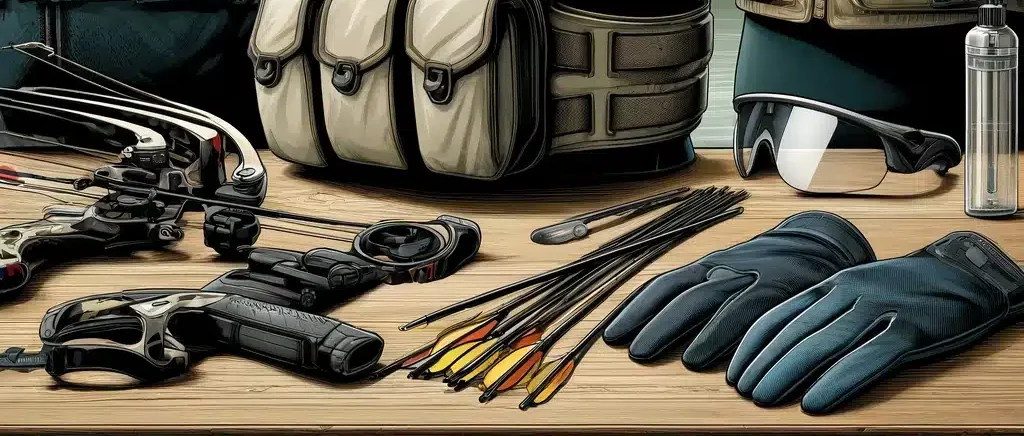
When engaging in bowfishing, you must prioritize your safety by wearing appropriate personal protective equipment (PPE). Two essential pieces of PPE are gloves and eye protection.
- Gloves provide a better grip on your bow and protect your hands from line burns or accidental cuts when handling fish. Look for gloves made from durable materials like neoprene or Kevlar that balance flexibility and protection.
- Eye protection such as polarized sunglasses with UV protection safeguards your eyes from glare off the water’s surface, sharp projectiles, or potential debris that may cause harm.

Conclusion – Bowfishing Safety
Bowfishing offers a thrilling and unique way to enjoy the outdoors, but it is vital to prioritize safety throughout your endeavors. By understanding and mitigating the common hazards associated with fishing lines, navigational obstacles, and wildlife encounters, you can ensure a safer bowfishing experience.
Remember, safety should always take precedence over everything else. With proper care and preparation, you can fully enjoy the excitement of bowfishing while preserving your and the environment’s integrity. So go out there, be safe, and have an unforgettable adventure in the waters!
